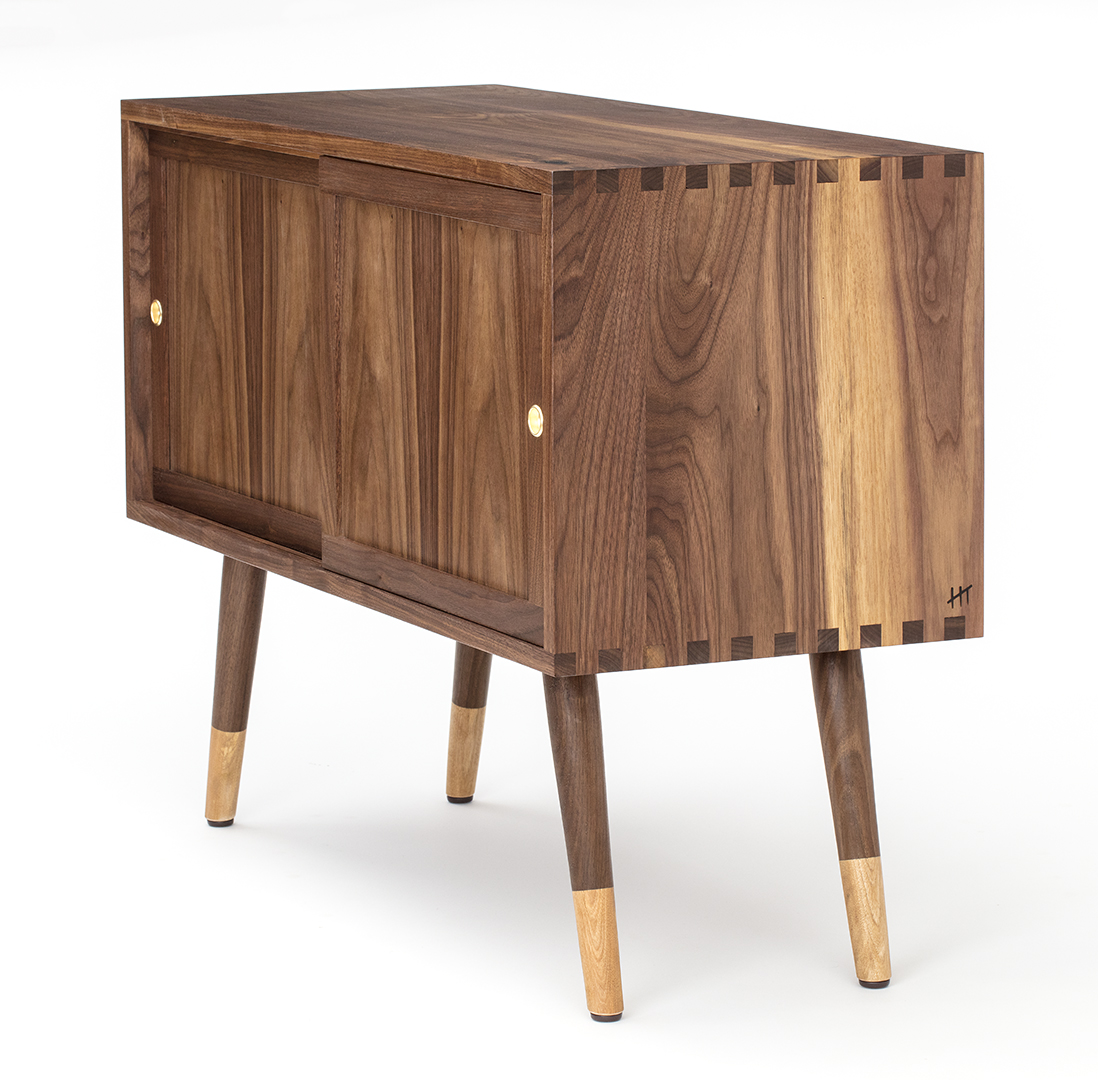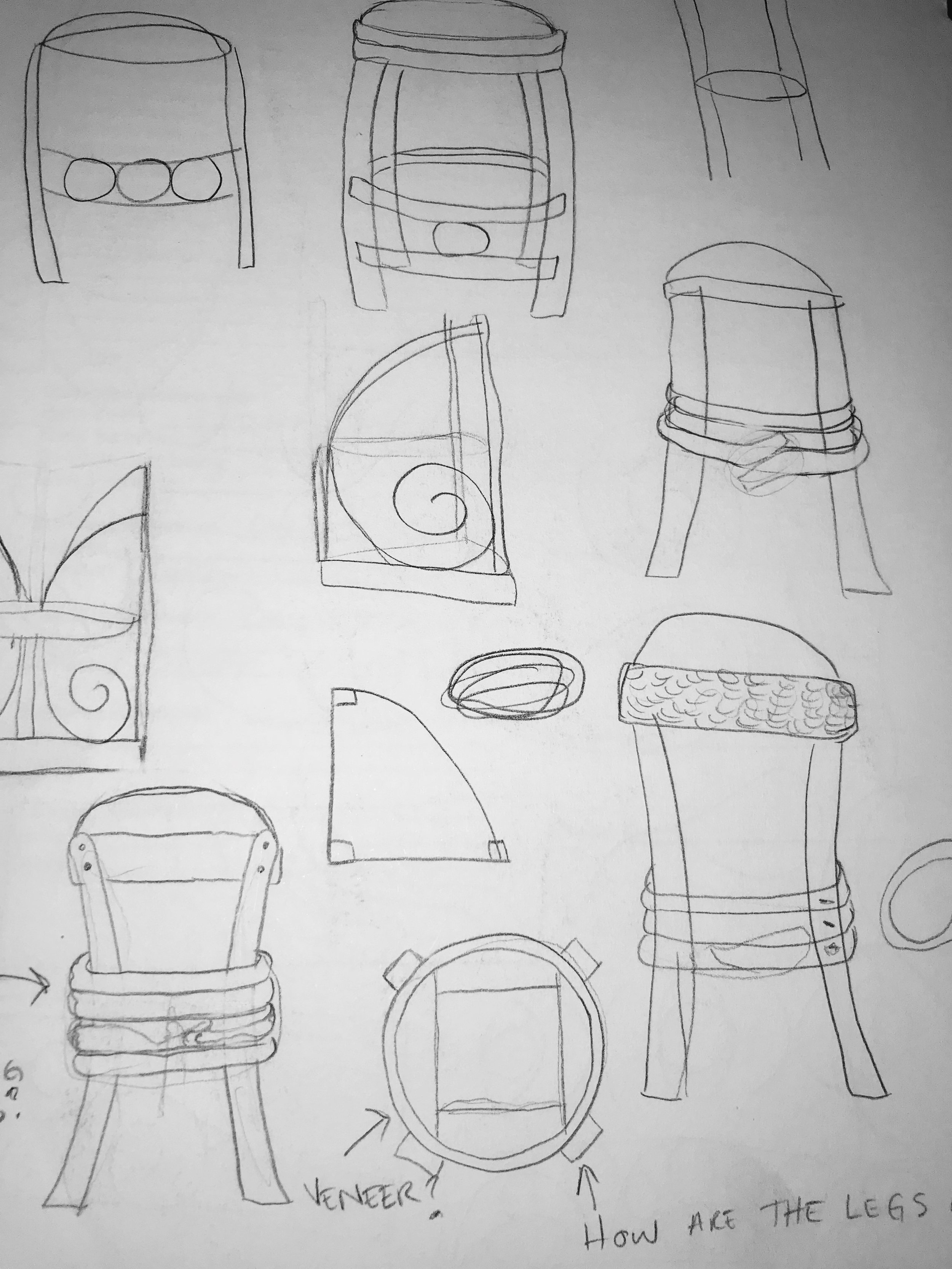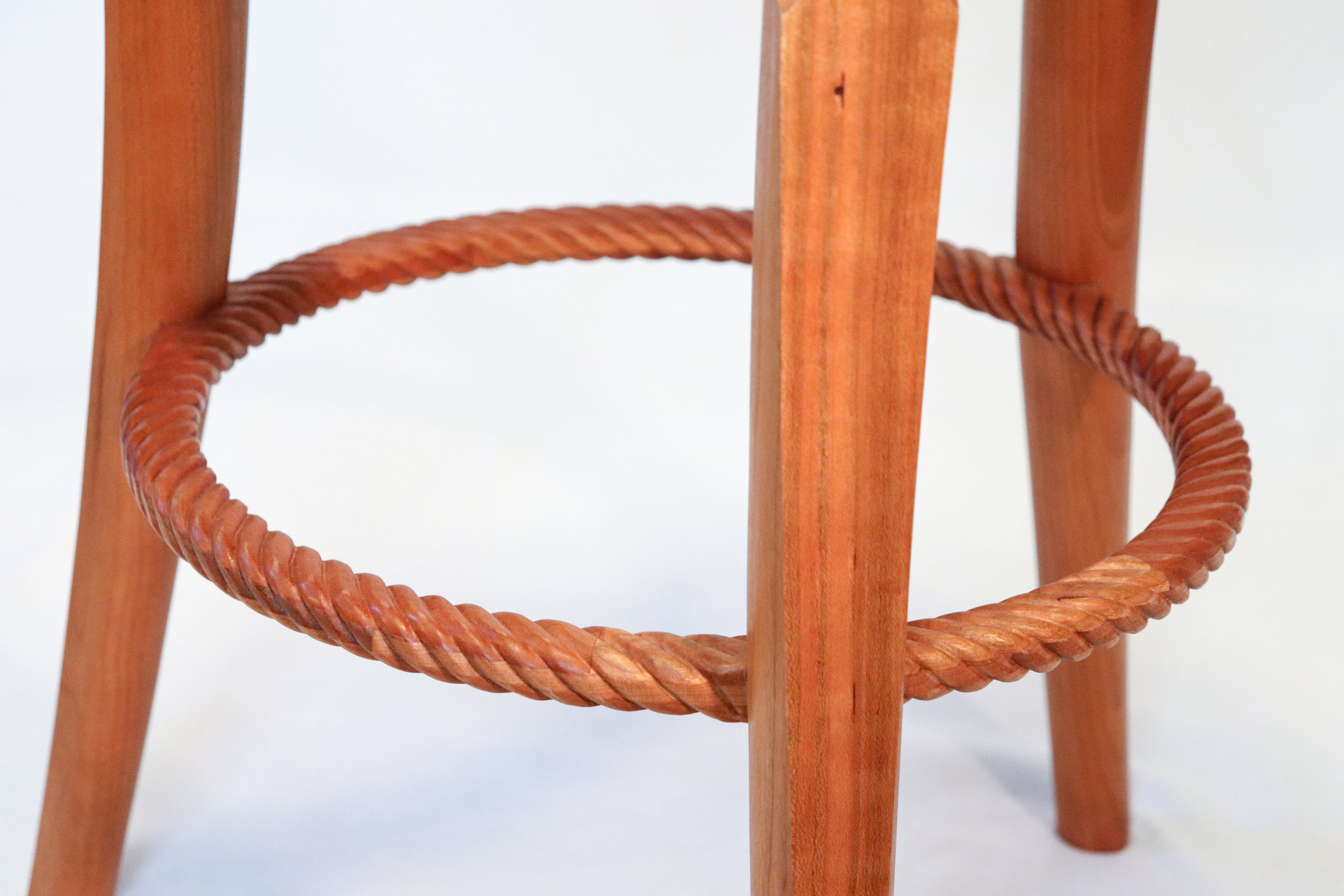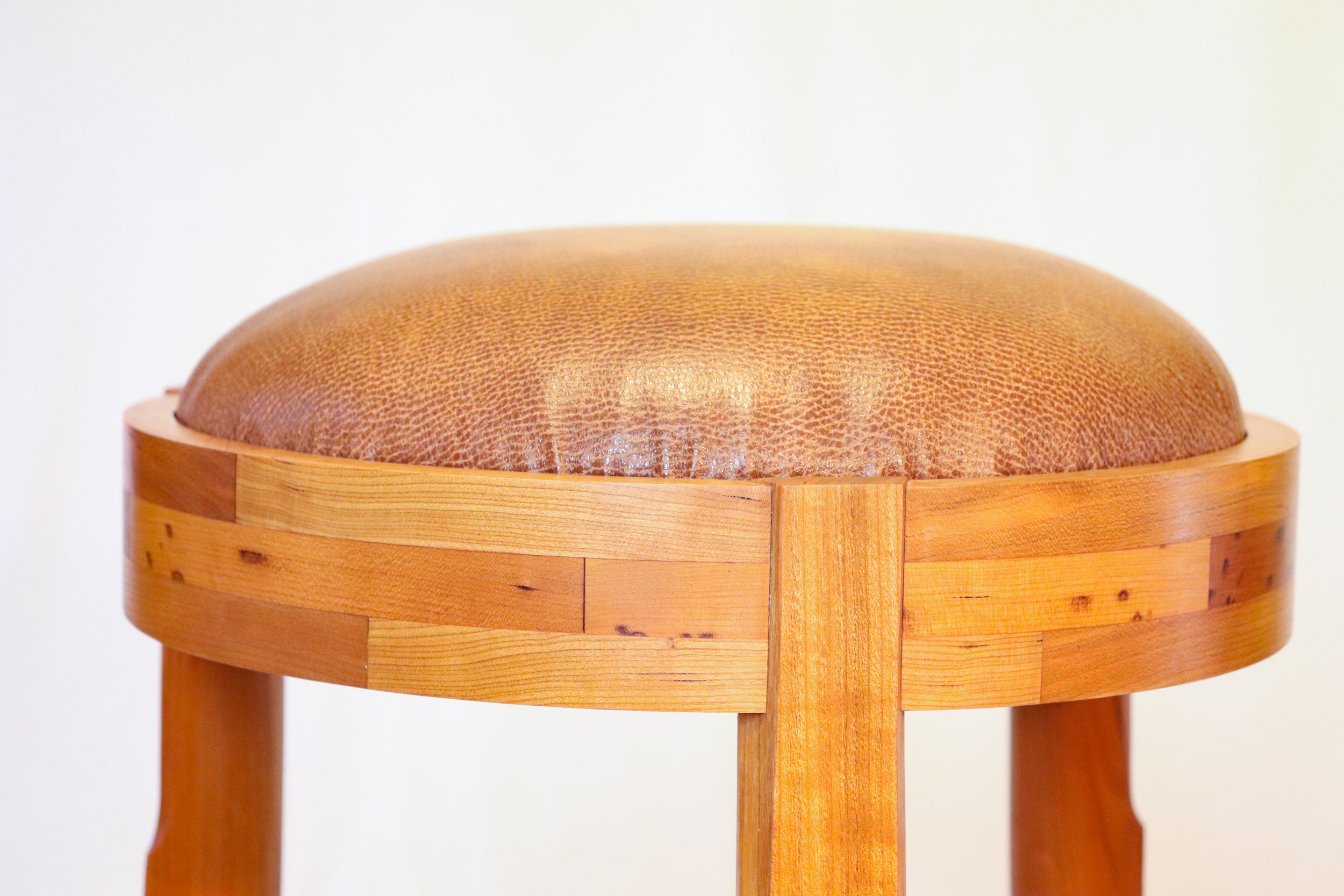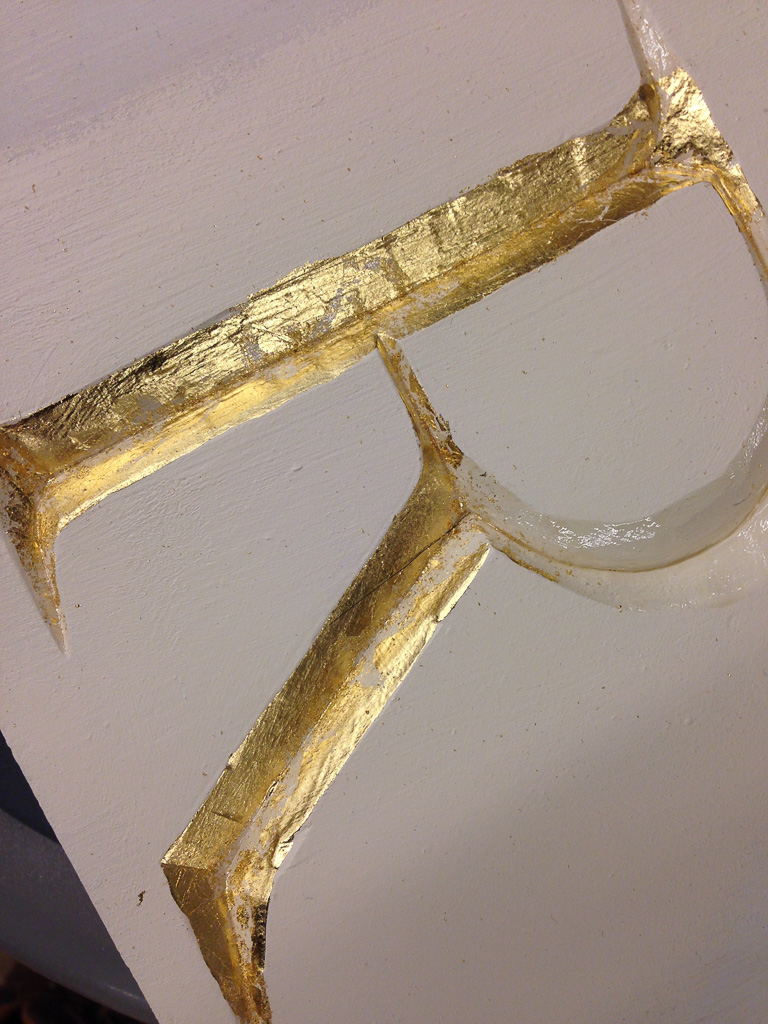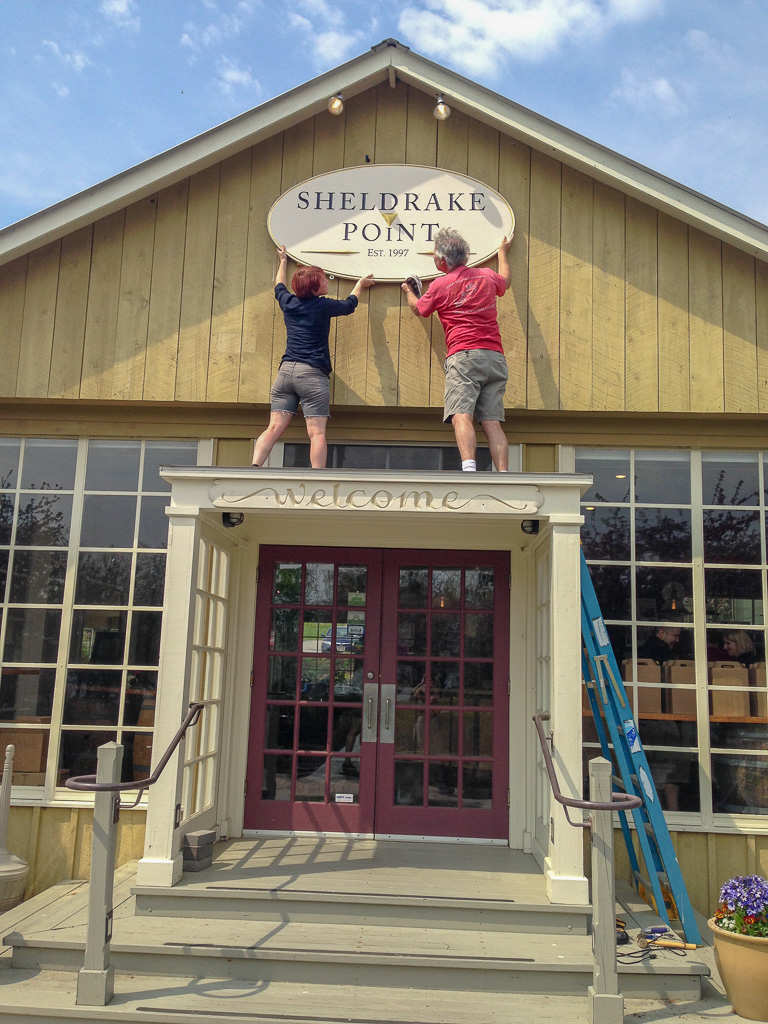2019 Reflections
/2019 was one hell of a year. I had a lot thrown at me in my personal life and had health problems surface, all which kept me away from the wood shop much more than I had hoped for. Still, I achieved many of the goals I had set for myself and managed to almost triple my sales from last year. This adventure continues to be a great learning experience and I am so very grateful to be able to make things every day. Here is a little run-down of my projects from 2019.
Secretary Veneer Repair
Over time, the mahogany veneer on the base of this secretary-on-chest had chipped away due to the glue becoming unlamented. Since the veneer wasn’t original to the piece, I removed the old, replaced with new, adhered with traditional hide glue, and stained to match the existing finish.
Fiddlehead Shelves
These ornamental wall hangings are made by bent laminations, coopering and are backed with hand-made glass. For more details, read my blog post about the making of these shelves.
PV Makers Faire
The first ever Pioneer Valley Makers Faire took place in April at Smith College. HT Woodshop had a booth where I demonstrated how to carve letters to make signs.
The Smith Table
This petite and modern hallway table is made from white oak, the grain is continuous throughout and features dovetailed feathers on the corners in contrasting black walnut.
Devotion Shelf
I made this little heart shaped apothecary shelf using scraps and leftovers from the fiddlehead shelves. I am so happy with it that I plan on making more.
Bedside Table Reproduction
I reproduced the shaker table on the right from the measurements of the one on the left. This project was a lot of fun and I would love to do more reproduction commissions in the future.
Park Slope Table
This petite cherry pedestal table was designed to fit into a dining nook. The legs needed to be central so people could slide in and out easily.
Segmented Bowl
One of my goals for the year was to make a segmented bowl. I will have a new blog post out soon about how I made it.
Holiday Craft Fair and Web Store Launched!
The year was closed out with a successful craft show and the launching of my online store for holiday shopping. Most items were sold out!
I’ll be taking some time off this winter to rest and recharge. I plan on getting back into the wood shop in February and will have the online store back up and running soon thereafter. Thank you so much for following along and supporting my work! Happy New Year!

















































































